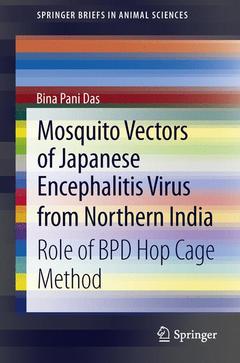Japanese Encephalitis (JE), a mosquito borne disease, is the leading cause of viral encephalitis in 14 Asian countries due to its epidemic potential, high case fatality rate and increased possibility of lifelong disability in patients who recover from this dreadful disease. In spite of seriousness of the disease, still only few books are available for ready reference. Hence, this book will be useful for students, entomologists, paramedical staff and vector control managers in public health. The objective of the book is to disseminate the knowledge gained by the author from ecological studies on JE vectors undertaken in 2 endemic and 2 non endemic areas of Northern India over a period of last 15 years (1998-2012) of research in the field of ecology of mosquito vectors of JE virus initially at National Institute of Communicable Diseases (Ministry of Health & Family Welfare, Government of India), Delhi and later at Jamia Millia Islamia, a Central University, Delhi, to anyone who wishes to curtail death of children due to this dreaded disease. Of the thousand suspected JE deaths in India annually, more than 75% is contributed by Northern India wherein disease transmission failed to be explained based on entomological evidence due to inadequate mosquito surveillance tool used in determining JE vector density. In order to overcome the above problem, Dr Bina Pani Das, the author of this book, developed ?BPD hop cage method?, a simple, cost effective, and operationally feasible surveillance tool specially designed to capture predominantly day resting adult Cx. tritaeniorhynchus mosquitoes, the principal JE vector species in the country from land and aquatic vegetation.




